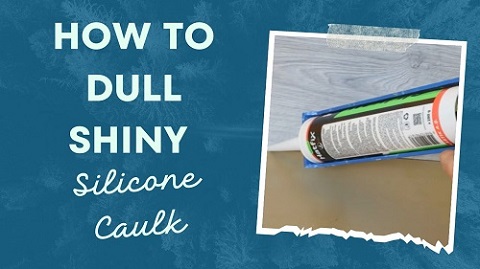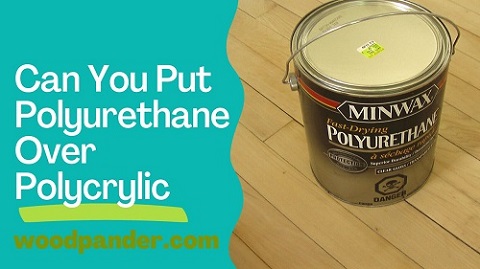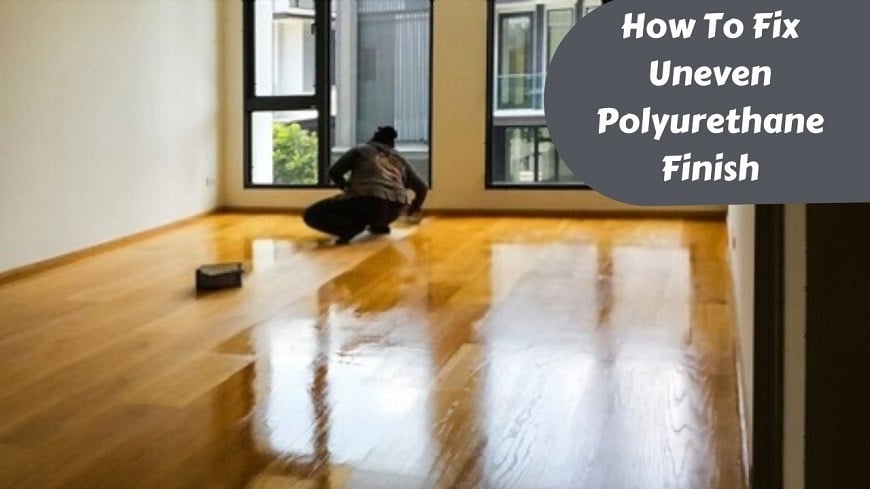Too much sheen in woodwork might not always do justice to its appearance. Maybe it would have looked better if it was less glossy.
So, how to dull a glossy finish?
To dull a glossy finish, you can try the sanding and polishing technique. For that, first, sand the surface to remove the sheen. Then use a polish compound to adjust the sheen to your liking. You can also try the sanding and refinishing method. Remove the polishing compound and sand the surface. Apply finishing spray and you’re done.
Those were only the surface points. Read along to know more about the process of the mentioned methods above.
What is a Glossy Finish?
A glossy finish refers to a type of surface coating that has a high level of shine and reflectivity. It is commonly used on various materials such as wood, metal, and plastic to enhance their appearance and provide a protective layer. Gloss levels are used to measure the degree of shine in a finish, and they can range from low gloss to high gloss.
Low gloss finishes have a subtle sheen and offer a more muted appearance.
They are often preferred for surfaces that require a more understated look or for areas where glare and reflections need to be minimized. Medium gloss finishes have a moderate level of shine and strike a balance between low and high gloss.
They are versatile and can be used in a variety of settings and applications. High gloss finishes, on the other hand, have a mirror-like shine and offer a bold and dramatic look. They are commonly used in modern and contemporary designs to create a sleek and polished appearance.
Each gloss level has its own characteristics and benefits. Low gloss finishes are more forgiving when it comes to hiding imperfections and scratches, while high gloss finishes are more reflective and can make colors appear more vibrant. The choice of gloss level depends on personal preference, the desired aesthetic, and the intended use of the surface.
Understanding gloss levels is important when considering how to dull a glossy finish without sanding. By knowing the characteristics of different gloss levels, you can choose the most appropriate method to achieve the desired level of shine for your surface.
Why Would You Want to Dull a Glossy Finish without Sanding?
There are several reasons why you might want to dull a glossy finish without sanding. Whether you want to change the look of a surface or prepare it for refinishing, these methods offer a convenient alternative to sanding.
One common reason for dulling a glossy finish is to change the look of a surface. Glossy finishes can be too shiny and reflective for some people’s taste, especially in certain settings or decor styles.
By dulling the finish, you can achieve a more muted and understated appearance that better suits your preferences or the overall aesthetic of the space. This can be particularly useful when working with furniture, cabinets, or other wooden surfaces that have a glossy finish.
Another reason to dull a glossy finish without sanding is to prepare a surface for refinishing. If you want to apply a new coat of paint, stain, or varnish to a surface with a glossy finish, it’s important to create a suitable base for the new finish to adhere to. Sanding is often recommended for this purpose, but it can be time-consuming and messy.
By using alternative methods to dull the glossy finish, you can skip the sanding step and still achieve a surface that is ready for refinishing.
By understanding the reasons why you might want to dull a glossy finish without sanding, you can better appreciate the benefits and convenience of these alternative methods. Whether you want to change the look of a surface or prepare it for refinishing, these methods offer effective solutions that save you time and effort.
How To Dull A Glossy Finish On Wood?

Getting a glossy finish comes with a few efforts. But removing the gloss would take a lot more work to do.
Moreover, if you’re a novice, it might seem like a colossal job for you. But don’t be discouraged. We will help you to achieve the right sheen for your furniture.
All you’ve to do is follow the lead-
Method-1: Sanding And Polishing
This is the simplest and most straightforward process to lose the gloss. To do this project, you’re gonna need some tools. Here’s what you’re gonna need-
- Sandpaper: You’ll be needing 220, 320, 400, 600, 1000, 1200 grit sandpapers. Keep finer sandpaper as well.
- Clothes to remove dust: You’ll need a few pieces of clothes ready by your side.
- Orbital slander: It’s optional. You might not need this. But it depends on the matte look you’re looking for.
- Polishing materials: They’ll be necessary if you use orbital slander. Collect a coarse compound.
Now that you have the tools ready, it’s time to work.
Step-1: Sanding
First, remove any dirt on the surface with soap water. Now, check how thick the top coat of your product is.
If the coating is thick, you’ll need 220-320 grit sandpaper. If it’s thinner or you’re not sure about it, use 400-grit sandpaper. It’ll be safer for the wood.
Now take 220 grit sandpaper and start sanding the glossy area. Gently rub over the whole surface once. Be careful not to accidentally remove too much layer, it’ll damage the wood.
Apply a little soap water and wipe it with a cloth. We’re going to sand the surface again. After you’re done, wipe the area with a cloth and soap water.
Now, use 600 grit sandpaper to rub the wood surface. It’ll remove any buffing stains and even out the surface. After sanding it all over once, wipe it with soap water. Repeat the process until the result is satisfactory for you.
If the outcome is to your liking, the work is done. But if it seems to become too dull, fret not. We have another remedy for it.
To fix the issue, use 800 grit sandpaper to sand the surface. It’ll put some gloss back on it. After sanding, wipe it with soap water. Keep it going until you find the gloss to your liking.
If it’s still not sufficient enough, use 1000 grit sandpaper and re-apply the process. If you need more, move on to 1200 grit sandpaper. Higher grit sandpapers make the surface look smoother and satiny.
Step-2: Polishing
If the previous step didn’t give a satisfactory outcome, follow this step. We’re gonna need an electric orbital sander for this. It’s advised to use a random orbital sander than using a traditional sheet sander.
Apply some coarse polishing compound to the buffing pad of the sander. Start polishing the surface without giving any extra pressure. If you’re finished buffing, wipe the surface with a cloth and soap water. Set it to dry.
Hopefully, this method gave you the right outcome you were looking for. If that isn’t the case, we’ll introduce you to another method.
Method-2: Sanding And Refinishing
The previous method might not be satisfactory to all. But this method works well for almost everyone. The things you’re gonna need for this process are-
- Naphtha.
- 220 grit sandpaper.
- Finishing spray.
- Clean cloths to wipe the dust.
Step-1: Sand The Surface
If you’ve followed the first method, you’ve to remove the finishing compound first. Use naphtha or mineral spirit to do the job. Now, pick 220 grit sandpaper and start sanding the surface.
If you’ve landed on this method first then start with sanding the whole surface. Wipe off any dirt with soap water. Leave it to dry before moving on to the next step.
Step-2: Apply Finishing Spray
Before applying the finishing spray, make sure the surface is clean and dry. Apply a light coat of finishing spray on the surface.
Use any finishing spray up to your choice. The favorable options would be matte, semi-gloss, or satin. It depends on how you like to keep the sheen.
Using matte spray will most likely give you the dull sheen you were looking for. Let it dry before applying another layer to it.
If you’re happy with the outcome, you’re done with this project. If you think the surface is too dull, re-apply the spray again. Keep repeating this process until you find the result is satisfactory.
Hopefully this time, you’re satisfied with the end result.
Using Chemical Strippers
One effective method for dulling a glossy finish without sanding is by using chemical strippers.
These products are designed to remove the glossy layer from the surface, allowing for a more matte or satin appearance. To use a chemical stripper, you will need to follow a step-by-step guide that includes applying the stripper, allowing it to sit for a specified amount of time, and then removing it according to the manufacturer’s instructions.
This method can be particularly useful for larger surfaces or intricate details where sanding may be difficult or time-consuming.
Using Paint and Primer
Another method for dulling a glossy finish without sanding is by using paint and primer.
This method involves applying a layer of paint and primer over the glossy surface to create a more matte or satin finish.
The key to success with this method is to choose a paint and primer that is specifically designed to adhere to glossy surfaces.
By using this combination, you can effectively dull the glossy finish without the need for sanding. It is important to follow the manufacturer’s instructions for proper application and drying times to achieve the desired result.
Using Sealant
Sealants can also be used to dull a glossy finish without sanding.
These products create a protective layer over the glossy surface, altering its appearance to a more matte or satin finish.
To use a sealant, you will need to apply it evenly over the surface using a brush or roller.
It is important to choose a sealant that is compatible with the material you are working with, such as wood or metal. Additionally, make sure to follow the manufacturer’s instructions for proper application and drying times to achieve the desired result.
Using Steel Wool
Steel wool is a versatile tool that can be used to dull a glossy finish without sanding.
By gently rubbing the steel wool over the glossy surface, you can effectively remove the glossy layer and create a more matte or satin appearance.
It is important to use a fine-grade steel wool to avoid scratching or damaging the underlying surface. Additionally, it is recommended to test the steel wool on a small, inconspicuous area before applying it to the entire surface to ensure compatibility and desired results.
Using a Heat Gun
For those looking for a more advanced method, using a heat gun can be an effective way to dull a glossy finish without sanding. By applying heat to the glossy surface, you can soften the finish and then gently scrape it away using a putty knife or scraper.
This method requires caution and precision to avoid damaging the underlying surface or causing any safety hazards.
It is important to follow safety guidelines and manufacturer’s instructions when using a heat gun to dull a glossy finish.
Matte Finishing Products
Matte finishing products, such as matte varnish or matte topcoat, can be applied over a glossy finish to achieve a duller appearance.
These products are specifically designed to create a matte or satin finish and can be easily applied using a brush or roller.
It is important to choose a matte finishing product that is compatible with the material you are working with and follow the manufacturer’s instructions for proper application and drying times.
Waxing
Lastly, waxing can be used to dull a glossy finish without sanding. By applying a layer of wax over the glossy surface and then buffing it with a soft cloth, you can achieve a more matte or satin appearance.
Waxing not only dulls the glossy finish but also provides a protective layer that enhances the durability of the surface.
It is important to choose a wax that is compatible with the material you are working with and follow the manufacturer’s instructions for proper application and buffing techniques.
Why Should Sanding to Dull a Glossy Finish Be Avoided
Sanding should be avoided when trying to dull a glossy finish for several reasons. Firstly, sanding can damage the underlying surface by removing too much material or creating uneven surfaces. This can result in an unsightly finish and may require additional refinishing or repairs. By avoiding sanding, you can preserve the integrity of the underlying surface and achieve the desired dull finish without the risk of damage.
Secondly, sanding can be a time-consuming process, especially for larger surfaces or intricate details. By using alternative methods for dulling a glossy finish without sanding, you can save time and achieve the desired result more efficiently.
Another reason to avoid sanding is the difficulty in controlling the temperature and pressure used during the process. Sanding requires a delicate balance of pressure and movement, and if done incorrectly, it can result in uneven surfaces or damage to the underlying material. By using other methods that do not involve sanding, you can have better control over the outcome and minimize the risk of damage.
Furthermore, sanding creates dust, which can settle on surrounding surfaces and pose a health risk if inhaled. By choosing alternative methods, you can avoid the issue of dust and maintain a cleaner and safer working environment.
Lastly, sanding can cause irreversible damage to the underlying surface. Once material is removed through sanding, it cannot be easily replaced or repaired. By opting for methods that do not involve sanding, you can minimize the risk of irreversible damage and have more control over the outcome.
When dulling a glossy finish without sanding, prioritize safety by wearing appropriate gear and following product instructions. By exploring alternative methods, such as using chemical strippers, paint and primer, sealants, steel wool, heat guns, matte finishing products, or waxing, you can achieve the desired dull finish without the need for sanding. Remember to prioritize safety and follow instructions for proper application and precautions.
How to Dull a Glossy Finish by Refinishing
Refinishing is a popular method for dulling a glossy finish without sanding. This process involves applying a new layer of finish over the existing glossy surface to achieve the desired matte or satin appearance. Refinishing can be done on various materials, including wood, metal, and even painted surfaces.
One of the key benefits of refinishing is that it allows you to change the sheen of the finish without the need for extensive sanding or stripping.
This makes it a convenient option for those who want to transform the look of their glossy surfaces without the risk of damaging the underlying material.
To begin the refinishing process, start by cleaning the surface thoroughly to remove any dirt, dust, or grease. This will ensure proper adhesion of the new finish. Next, lightly sand the surface with fine-grit sandpaper to create a rough texture that will help the new finish adhere better.
After sanding, wipe away any dust and apply a coat of primer. The primer will provide a smooth and even base for the new finish. Choose a primer that is compatible with the type of finish you plan to apply. Allow the primer to dry completely before moving on to the next step.
Once the primer is dry, apply the desired finish using a brush, roller, or sprayer, depending on the size and nature of the surface. Make sure to follow the manufacturer’s instructions for proper application and drying times.
After applying the first coat, allow it to dry completely before applying additional coats if needed. Multiple coats may be necessary to achieve the desired level of dullness.
Once the final coat is dry, inspect the surface for any imperfections or unevenness. If necessary, lightly sand the surface with fine-grit sandpaper to smooth out any rough areas.
To protect the newly refinished surface, consider applying a clear topcoat or sealer. This will provide added durability and enhance the overall appearance of the finish.
How Do You Make Polyurethane Finish Less Shiny?
To make a polyurethane finish less shiny, one effective method is to remove the old polyurethane and apply a matte polyurethane instead. This process allows you to achieve a more subdued and less glossy appearance on your surfaces.
To begin, you will need to remove the old polyurethane from the surface. Start by sanding the surface with medium-grit sandpaper to remove the glossy layer. This will create a rough texture that will help the new matte polyurethane adhere better. Make sure to sand in the direction of the wood grain for a smoother finish.
After sanding, wipe away any dust and debris with a clean cloth or tack cloth. This will ensure a clean surface for the new polyurethane.
Next, apply a coat of matte polyurethane using a brush, roller, or sprayer, depending on the size and nature of the surface. Make sure to follow the manufacturer’s instructions for proper application and drying times.
Allow the first coat to dry completely before applying additional coats if needed. Multiple coats may be necessary to achieve the desired level of dullness.
Once the final coat is dry, inspect the surface for any imperfections or unevenness. If necessary, lightly sand the surface with fine-grit sandpaper to smooth out any rough areas.
To protect the newly applied matte polyurethane, consider applying a clear topcoat or sealer. This will provide added durability and enhance the overall appearance of the finish.
By removing the old polyurethane and applying a matte polyurethane, you can effectively make the finish less shiny. This method allows you to achieve a more muted and elegant look on your surfaces. Remember to sand the surface, apply the matte polyurethane, and follow the manufacturer’s instructions for best results.
How to Dull Glossy Polyurethane
Dulling a glossy polyurethane finish can be achieved using a few different methods. One effective method is to use a chemical deglosser. A deglosser is a liquid solution that removes the glossy layer from the polyurethane without the need for sanding.
To use a deglosser, start by cleaning the surface with a mild detergent to remove any dirt or grime. Once the surface is clean and dry, apply the deglosser using a clean cloth or sponge. Make sure to follow the manufacturer’s instructions for application and drying times.
After applying the deglosser, you may notice that the glossy finish starts to dull. If the desired level of dullness is not achieved, you can repeat the process until you are satisfied with the result.
Another method to dull a glossy polyurethane finish is to use a rubbing compound. Rubbing compounds are abrasive pastes that can be used to remove the glossy layer and create a more matte appearance.
To use a rubbing compound, apply a small amount to a clean cloth and gently rub it onto the surface in a circular motion. Continue rubbing until the glossy finish starts to dull.
Once the desired level of dullness is achieved, wipe away any residue with a clean cloth and inspect the surface for any imperfections. If necessary, you can touch up any areas that require additional dulling.
It’s important to note that when using a rubbing compound, it’s best to start with a small amount and gradually increase as needed. This will help prevent any damage to the underlying surface.
In conclusion, there are several methods available to dull a glossy polyurethane finish. Using a chemical deglosser or a rubbing compound can effectively remove the glossy layer and create a more matte appearance. Remember to follow the manufacturer’s instructions and take necessary precautions to protect the underlying surface.
Can Gloss Paint Be Made Flat?
Gloss paint is known for its shiny and reflective finish, which can be desirable in certain applications. However, there may be instances where you want to achieve a flat or matte finish instead. The good news is that it is possible to make gloss paint appear flat without the need for sanding.
One method to make gloss paint appear flat is by using a product called a flattening agent. A flattening agent is a substance that can be added to gloss paint to reduce its sheen and create a more matte finish. These agents work by scattering light and reducing the glossiness of the paint surface.
To use a flattening agent, simply mix it into the gloss paint according to the manufacturer’s instructions. It is important to note that different flattening agents may have different mixing ratios, so be sure to follow the specific guidelines provided. Once the flattening agent is mixed in, apply the paint as you normally would.
Another way to achieve a flat finish with gloss paint is by using a topcoat. A topcoat is a clear protective layer that can be applied over the gloss paint to alter its appearance. There are topcoats available specifically designed to create a matte or flat finish.
To use a topcoat, first, ensure that the gloss paint is completely dry. Then, apply the topcoat evenly over the painted surface using a brush or roller. Allow the topcoat to dry according to the manufacturer’s instructions before assessing the final finish.
It is important to keep in mind that both the flattening agent and topcoat methods may slightly alter the color of the paint. Therefore, it is recommended to test the desired finish on a small inconspicuous area before applying it to the entire surface.
In summary, gloss paint can be made to appear flat by using a flattening agent or applying a topcoat specifically designed for a matte or flat finish. These methods provide an alternative to sanding and allow you to achieve the desired look without compromising the integrity of the paint surface.
FAQs
Can you dull gloss paint?
Yes, you can. To remove the gloss, sanding the painted surface is the best choice. You can also try removing some finishing material.
How do you remove shine from gloss paint?
sanding the glossy painted surface is the best option. You can try the methods we discussed above to lose the sheen of your paint.
how to dull a glossy finish on metal?
Detach the metal parts and use a liquid deglosser to remove the gloss from the metal. Later use spray-on varnish. You can also try sanding the metal. Use vinegar or mineral spirit to rub the surface after you’re done sanding.
Why would I want to dull a glossy finish?
Glossy finishes can be too shiny and reflect too much light, making them unsuitable for certain applications.
Are Sanding and Dulling the Same?
Sanding and dulling are not the same, although they can achieve similar results. Sanding involves using abrasive materials to remove layers of the glossy finish, while dulling refers to reducing the sheen or shine of the finish without removing any material.
.Can you change the sheen of polyurethane?
Yes, you can change the sheen of polyurethane by using a topcoat with a different sheen level. For example, if you have a glossy polyurethane finish and want a matte finish, you can apply a topcoat specifically designed for a matte sheen.
.What is the Best Way to Dull Glossy Paint?
The best way to dull glossy paint is by using a flattening agent or applying a topcoat designed for a matte finish. These methods provide an alternative to sanding and allow you to achieve the desired look without compromising the integrity of the paint surface.
.How Much Sandpaper Do I Need to Dull a Glossy Paint?
If you want to dull a glossy paint by sanding, the amount of sandpaper you need will depend on the size of the surface you're working on. It's recommended to start with a medium-grit sandpaper and gradually move to a finer grit for a smoother finish.
Final Word on Ways to Dull a Glossy Finish
That was all from us about how to dull a glossy finish. Hopefully, it doesn’t seem like a tough job anymore.
See you soon in another post.






![Expert Tips on How To Dye Wood All The Way Through [4 Steps to Fine Dyed] how to dye wood all the way through](https://woodpander.com/wp-content/uploads/2021/08/How-To-Dye-Wood-All-The-Way-Through-4-Steps-to-Fine-Dyed-Wood.jpg)

